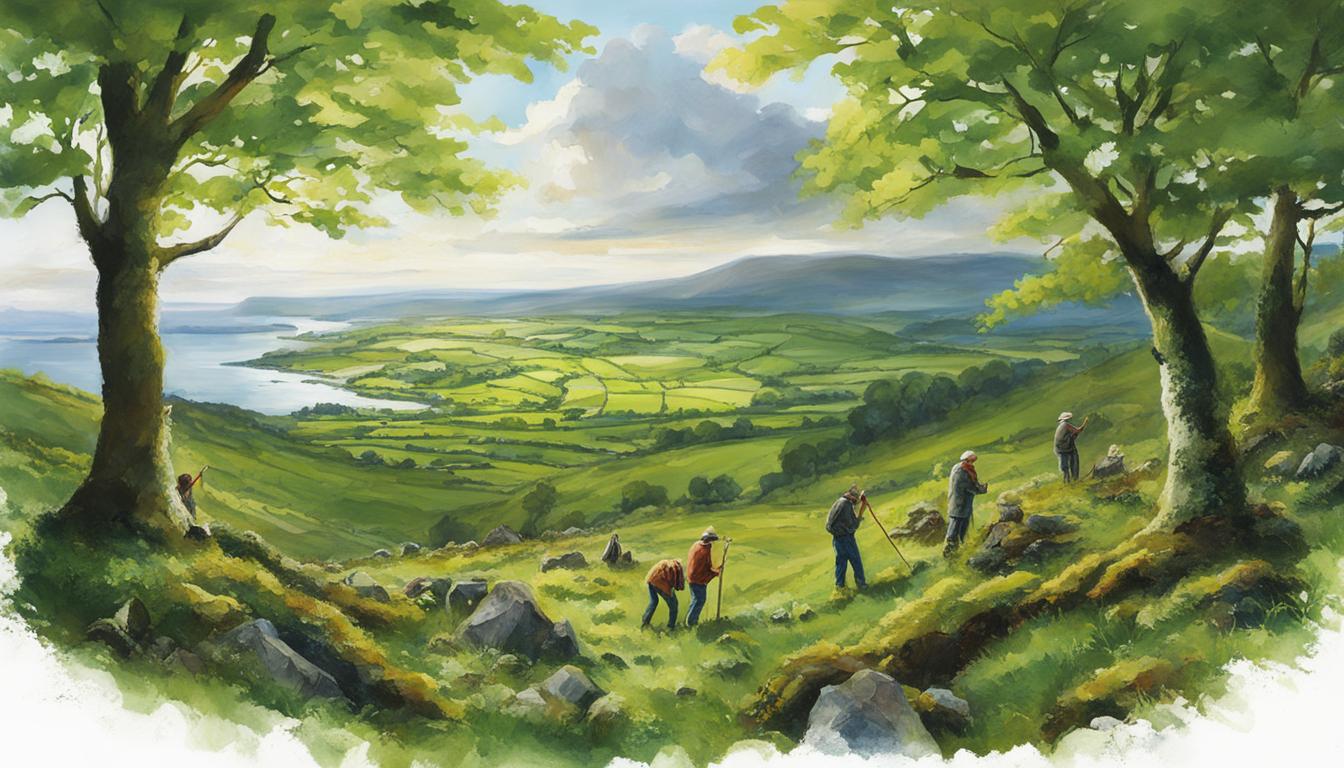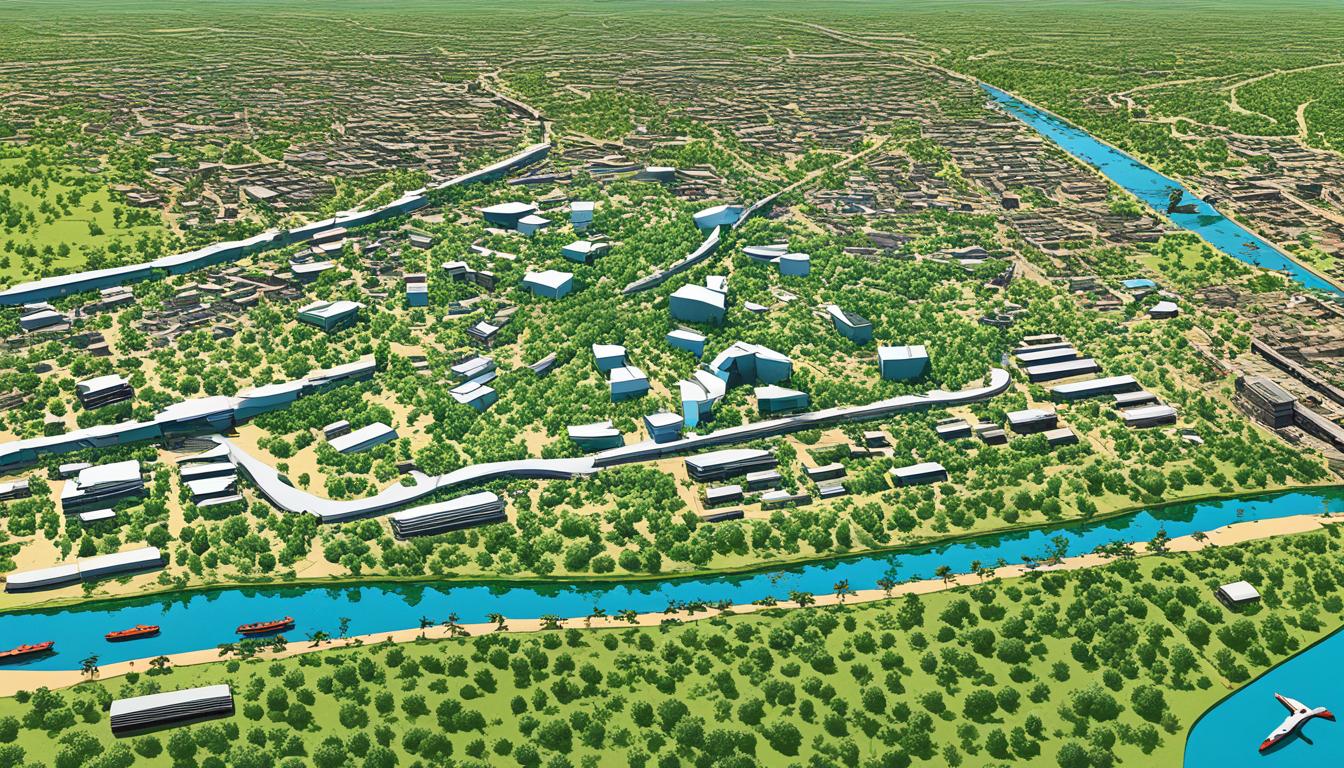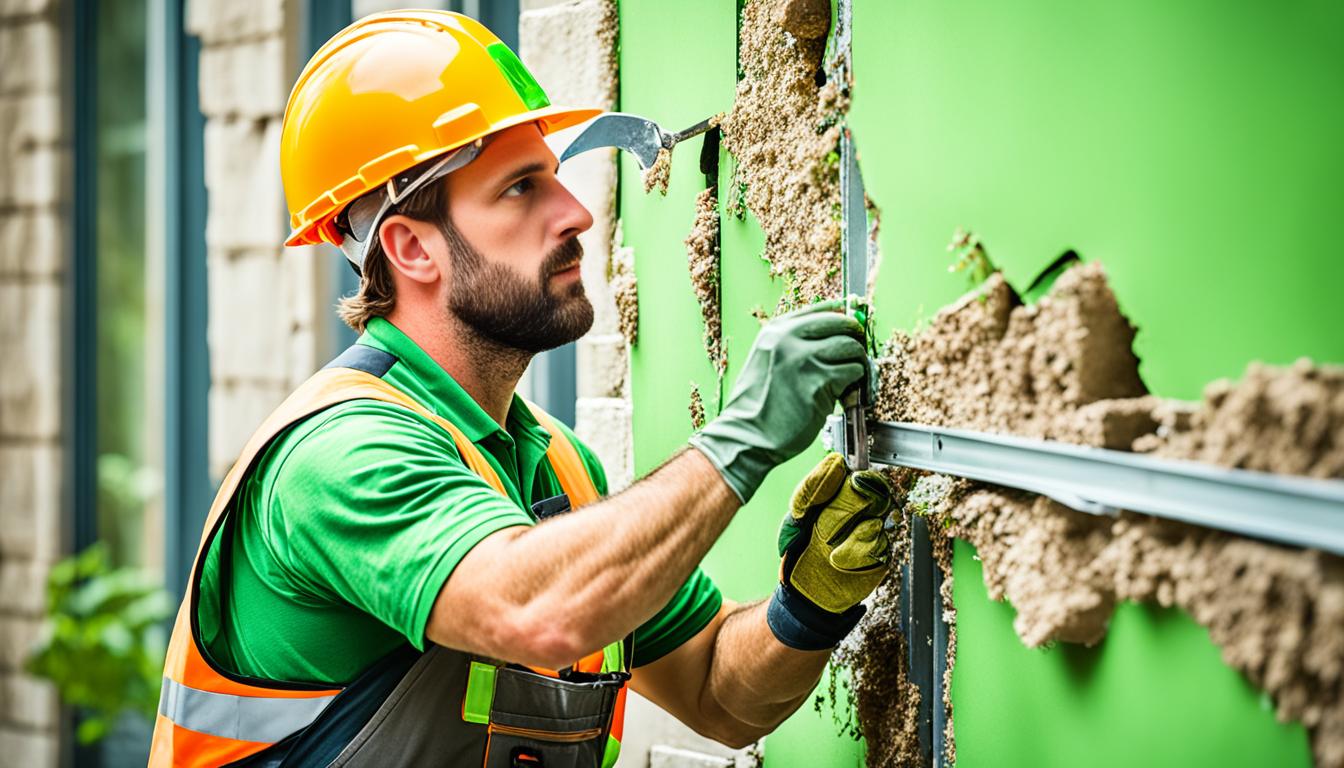South Korea Biodiversity and the Built Environment
South Korea is renowned for its remarkable biodiversity and the coexistence of nature with urban development. With over 100,000 native species and a total of more than 41,000 species, the country boasts a diverse array of flora and fauna. South Korea is home to 2,177 endemic species and nearly 38,000 indigenous species, making it a biodiversity hotspot.
However, this rich natural heritage is facing numerous challenges. Habitat loss, primarily due to extensive urbanization and industrialization, climate change, the introduction of invasive species, and poaching pose grave threats to South Korea’s biodiversity and the delicate balance between nature and the built environment.
Efforts to protect and conserve this invaluable natural wealth are crucial for South Korea’s environmental sustainability and the welfare of its people. Conservation programs, restoration initiatives, and public awareness campaigns play vital roles in safeguarding the country’s diverse ecosystems and preserving its unique species for future generations to cherish.
Key Takeaways
- South Korea boasts over 100,000 native species and is a biodiversity hotspot.
- Habitat loss, climate change, invasive species, and poaching threaten South Korea’s biodiversity.
- Conservation programs, restoration initiatives, and public awareness campaigns are crucial for protecting South Korea’s natural heritage.
- Efforts to balance development with conservation are essential to ensure environmental sustainability.
- Preserving South Korea’s biodiversity is vital for the well-being of its people and future generations.
The Importance of Wetlands and Tidal Flats for Biodiversity
Wetlands and tidal flats in South Korea are crucial habitats that support a diverse range of species. These ecosystems provide homes and sustenance for a variety of wildlife, including otters, spoon-billed sandpipers, and dragonflies. However, the gradual loss of wetlands and tidal flats poses a significant threat to these species and their habitats.
Protecting a Haven for Wildlife
South Korea’s wetlands and tidal flats serve as vital nesting grounds, feeding areas, and migration stopovers for numerous species. The unique conditions found in these habitats support a rich food chain and promote the survival of countless organisms.
Wetlands play a crucial role in regulating water flow, purifying water, and preventing flooding. They also trap sediment, reduce pollution, and provide essential habitat for aquatic plants, insects, fish, and amphibians.
Tidal flats, on the other hand, offer a haven for migratory birds, providing abundant food sources such as mollusks and worms. They are also important breeding grounds for many marine species and serve as nurseries for the early life stages of fish and other aquatic organisms.
The Threat of Habitat Loss
Despite their ecological importance, wetlands and tidal flats in South Korea are facing significant habitat loss due to human activities, including urban development, agriculture, industrialization, and the reclamation of land for infrastructure projects.
This ongoing habitat loss has severe consequences for the species that rely on these ecosystems for survival. The destruction of wetlands and tidal flats disrupts the delicate balance of the food chain, leading to a decline in biodiversity. Species that depend on these habitats for breeding, feeding, and nesting are pushed to the brink of extinction.
South Korea’s wetlands and tidal flats are not just home to diverse species; they also provide essential ecosystem services that benefit society as a whole.
Preserving South Korea’s Precious Ecosystems
Recognizing the importance of wetlands and tidal flats, various conservation organizations, government initiatives, and local communities are working tirelessly to protect and restore these crucial habitats.
Efforts are being made to raise public awareness about the value of wetlands and tidal flats and the need for their conservation. Sustainable management practices and policies are being implemented to minimize further habitat loss and promote the restoration of degraded areas.
Collaboration between different stakeholders, including government agencies, scientists, conservationists, and local communities, is essential to ensure the long-term preservation of South Korea’s wetlands and tidal flats. By taking action now, we can safeguard these invaluable ecosystems and protect the rich biodiversity they support for generations to come.
Conservation Efforts for Endangered Species
In South Korea, the protection of endangered species is a top priority. The government has implemented the Act on Wildlife Protection and Management, which specifically identifies and legally manages 246 endangered species. These conservation efforts aim to safeguard the country’s unique flora and fauna, ensuring their survival for future generations.
One of the key strategies in South Korea’s conservation programs is the establishment of restoration programs for endangered species. Two notable examples are the Asiatic Black Bear and the Crested Ibis.
The Asiatic Black Bear, or Ursus thibetanus ussuricus, is an endangered species found in the mountainous regions of South Korea. This bear serves as an important indicator of the country’s biodiversity. To protect and restore the population of Asiatic Black Bears, South Korea has established sanctuaries and protected areas where these animals can thrive. Reforestation efforts and habitat restoration are undertaken to create safe spaces for the bears and to ensure the preservation of their natural habitats.
Another species targeted for conservation is the Crested Ibis, known as Nipponia nippon. This majestic bird holds cultural significance in South Korea and is considered a symbol of good luck and longevity. To support the restoration of the Crested Ibis population, breeding centers and research facilities have been established. These facilities play a vital role in the captive breeding and reintroduction of the ibises into the wild, increasing their chances of survival and contributing to the conservation of their species.
Public awareness also plays a crucial role in species conservation in South Korea. Informing and educating the public about the importance of biodiversity and the need for conservation efforts helps foster a sense of responsibility and stewardship towards the environment. Through campaigns, educational programs, and community engagement, South Korea aims to raise public awareness and encourage active participation in protecting endangered species.
South Korea’s commitment to endangered species conservation is a testament to its dedication to environmental sustainability and the preservation of its natural heritage. Through robust conservation programs, active restoration efforts, and public awareness initiatives, the country is taking significant strides towards the protection and recovery of its endangered species.
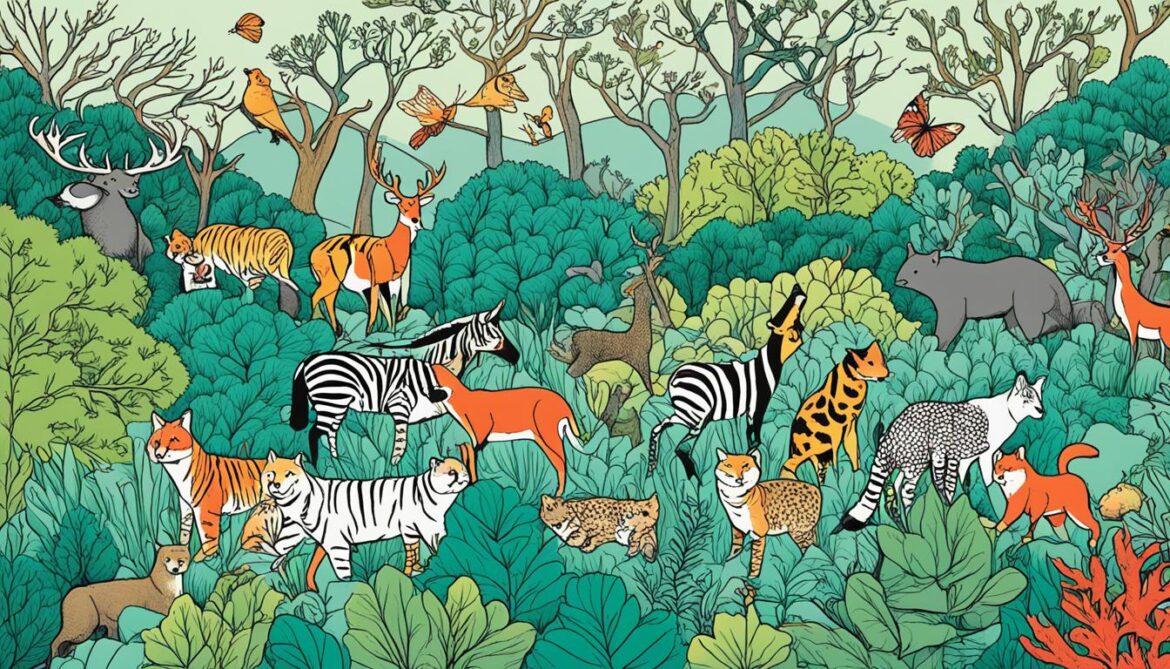
Conservation Programs for Endangered Species
The conservation programs implemented in South Korea highlight the country’s strong commitment to protecting endangered species. These programs not only focus on creating protected areas but also aim to restore and revitalize natural habitats to support the survival and recovery of endangered species. Through close collaboration between the government, conservation organizations, and local communities, South Korea strives to make a positive impact on endangered species conservation and enhance biodiversity in the region.
| Endangered Species | Conservation Measures |
|---|---|
| Asiatic Black Bear | – Establishment of sanctuaries and protected areas – Habitat restoration and reforestation – Encouraging public awareness and engagement |
| Crested Ibis | – Breeding centers and research facilities for captive breeding – Reintroduction of ibises into the wild – Community involvement in conservation efforts |
Restoration Programs in Action: The Asiatic Black Bear
The restoration program for the Asiatic Black Bear in South Korea aims to preserve this remarkable species and its critical role in the ecosystem. The program focuses on various initiatives, including the establishment of sanctuaries and protected areas where these bears can thrive and flourish.
Habitat restoration plays a key role in the restoration program, as the loss and degradation of natural habitats have greatly impacted the bear population. Reforestation efforts are implemented to replenish the bear’s preferred forested environments, providing them with suitable habitats for feeding, breeding, and shelter. Through tree planting and the regeneration of native vegetation, the restoration program ensures the availability of vital resources for the bears’ survival.
The restoration program also prioritizes the creation of safe spaces for the Asiatic Black Bears. This includes the construction of bear-proof fencing and the implementation of measures to reduce human-wildlife conflicts. By minimizing interactions between bears and humans in specific areas, the program aims to safeguard both the bear population and local communities.
Additionally, the restoration program emphasizes scientific research and monitoring to gain a better understanding of the Asiatic Black Bears’ behavior, population dynamics, and habitat requirements. This knowledge allows conservationists to make informed decisions and implement targeted conservation strategies to support the long-term survival of the species.
Overall, the restoration program for the Asiatic Black Bear in South Korea showcases the nation’s commitment to species conservation. By focusing on the establishment of sanctuaries, habitat restoration, and creating safe spaces, South Korea is actively working towards preserving this iconic species and ensuring the continued balance of its ecosystem.
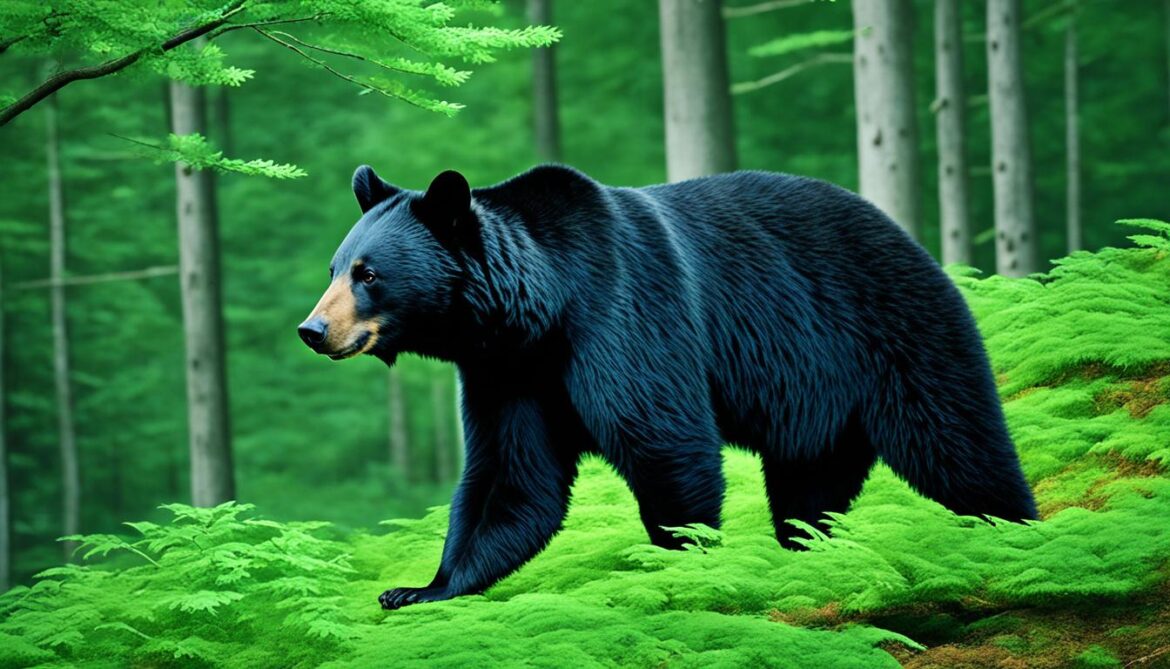
| Restoration Program Highlights | Impact |
|---|---|
| Establishment of sanctuaries and protected areas | Provides safe habitats for Asiatic Black Bears to thrive |
| Habitat restoration and reforestation | Replenishes bear-friendly environments and vital resources |
| Creation of safe spaces and bear-proof fencing | Reduces human-wildlife conflicts and promotes coexistence |
| Scientific research and monitoring | Enhances knowledge for targeted conservation efforts |
Conserving Cultural Icons: The Crested Ibis
The Crested Ibis, an iconic bird native to South Korea, holds significant cultural value for the people of the country. Considered a symbol of good luck and longevity, this majestic bird has become an integral part of South Korea’s cultural heritage.
Unfortunately, the Crested Ibis faced severe population decline and was on the brink of extinction due to habitat loss and hunting. Recognizing the importance of preserving this endangered species, South Korea has launched extensive conservation efforts to protect and restore the Crested Ibis population.
Breeding centers and research facilities have been established to support the captive breeding and reintroduction of the ibises into the wild. These centers play a crucial role in the preservation and recovery of the Crested Ibis population. Through careful breeding programs and scientific research, South Korea aims to increase the number of ibises and ensure their survival for future generations.
“The conservation of the Crested Ibis not only safeguards a unique and majestic species but also upholds the cultural heritage of South Korea.”
These conservation efforts go beyond biological preservation. South Korea recognizes that protecting the Crested Ibis is not just about saving a species but also about preserving a cultural icon. The ibis holds a special place in the hearts of the people, representing their connection to nature and their rich heritage.
The restoration of the Crested Ibis population is a testament to South Korea’s commitment to biodiversity conservation and the preservation of its cultural heritage. By investing in these conservation programs, South Korea aims to create a harmonious balance between the protection of endangered species and the sustainable development of the country.
Key Facts: South Korea Crested Ibis Conservation Efforts
| Breeding Centers | Research Facilities | Reintroduction Programs |
|---|---|---|
| Established to support captive breeding of Crested Ibises | Conduct scientific research on ibis behavior, habitat, and conservation | Focus on reintroducing ibises into their natural habitats |
| Provide safe environments for breeding and hatching | Develop conservation strategies and guidelines | Monitor ibis populations and their adaptation to the wild |
| Collaborate with international conservation organizations | Conduct genetic studies to ensure healthy breeding populations | Educate local communities about the importance of ibis conservation |
South Korea’s efforts to conserve the Crested Ibis serve as a shining example of the country’s dedication to both its natural and cultural heritage. By safeguarding endangered species like the Crested Ibis, South Korea paves the way for a more sustainable future, where biodiversity and cultural traditions can thrive together.

Protected Areas and Biodiversity Hotspots
South Korea recognizes the importance of protecting its natural heritage and has established a comprehensive system of protected areas to conserve its diverse ecosystems. These protected areas include national parks, ecological and scenery conservation areas, and wetland protected areas. As of 2013, there were 1,402 designated protected area sites across the country, covering approximately 16.4% of the nation’s territory.
These protected areas serve as crucial biodiversity hotspots where numerous endemic and indigenous species find refuge and thrive. By preserving these unique ecosystems, South Korea aims to maintain the delicate balance of its natural surroundings and ensure the long-term sustainability of its flora and fauna.
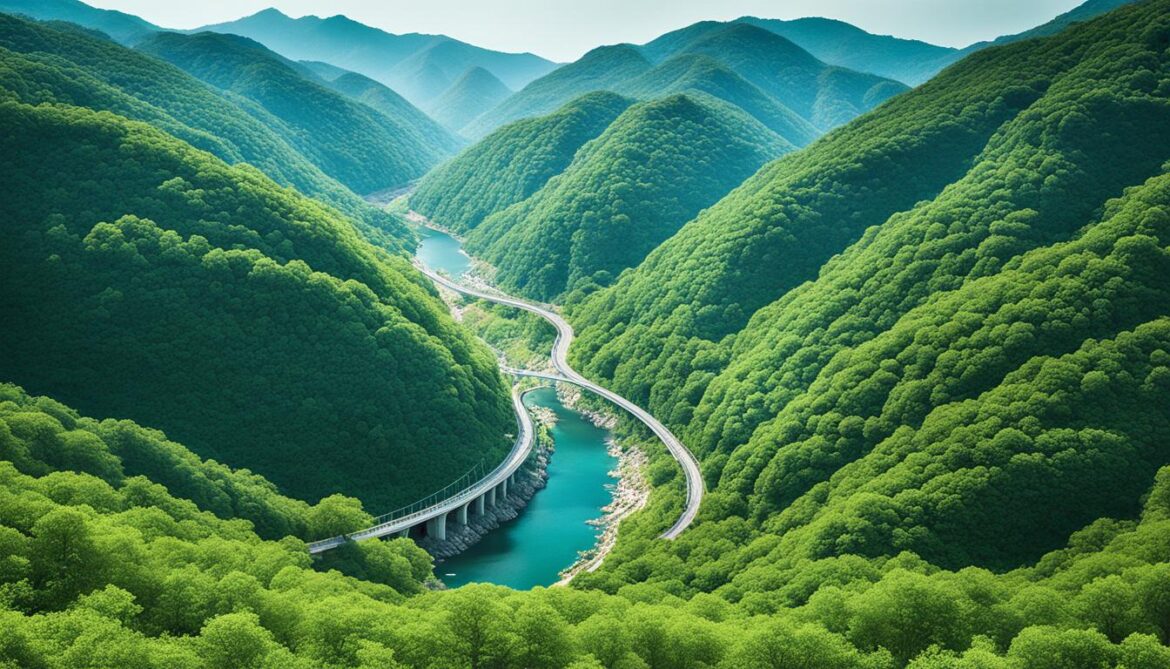
Table: South Korea’s National Parks and Ecological Conservation Areas
| National Parks | Year Established | Size (km²) |
|---|---|---|
| Bukhansan National Park | 1983 | 79.92 |
| Hallyeohaesang National Park | 1968 | 463.32 |
| Jirisan National Park | 1967 | 484.26 |
| Taeanhaean National Park | 1985 | 305.48 |
South Korea’s national parks provide protected areas for a wide range of species, from the iconic Korean black bear to rare orchids and migratory birds. Visitors can experience the country’s natural beauty through hiking trails, camping sites, and observation points scattered throughout these national treasures.
Additionally, South Korea has designated several ecological and scenery conservation areas that are known for their unique landscapes, geological formations, and outstanding natural beauty. These areas not only protect biodiversity but also offer opportunities for scientific research, educational programs, and sustainable tourism.
Lastly, the country has established wetland protected areas to safeguard critical habitats for numerous bird species and other wetland-dependent organisms. These areas play a crucial role in supporting migratory bird populations and maintaining healthy wetland ecosystems.
Habitat Loss and Fragmentation from Infrastructure Development
The rapid urbanization and industrialization of South Korea have resulted in significant habitat loss and fragmentation. Infrastructure development, particularly roads, has led to the destruction of natural habitats and created barriers that isolate wildlife populations. This fragmentation disrupts ecosystems and contributes to the decline of biodiversity in the country.
The expansion of cities and the construction of transportation networks have necessitated the clearing of land, resulting in the loss of vital habitats for many plant and animal species. Forests, wetlands, and other ecosystems have been destroyed or altered to make way for infrastructure development, eliminating crucial habitats that support diverse wildlife populations.
Fragmentation occurs when natural habitats are divided into smaller and isolated patches due to the presence of roads, buildings, and other infrastructure. This fragmentation poses a significant challenge to wildlife populations as it restricts their mobility and hinders their ability to access food, mates, and suitable habitats.
“The increasing fragmentation of habitats due to infrastructure development is a grave concern for biodiversity conservation in South Korea. It disrupts the natural connectivity of ecosystems and impairs the ability of species to adapt and thrive,” says Dr. Park Ji-hoon, a renowned ecologist at Seoul National University.
The fragmentation of habitats can have cascading effects on ecosystems. It weakens ecological processes, such as seed dispersal and pollination, which are vital for the maintenance of healthy and diverse plant communities. In addition, fragmented habitats often become more susceptible to invasive species, further exacerbating the decline in native biodiversity.
To mitigate the negative impacts of infrastructure development on biodiversity, there is a need for comprehensive planning and environmental assessments. Strategic placement of roads, wildlife corridors, and green spaces can help minimize habitat fragmentation and promote connectivity between fragmented patches. These measures can provide wildlife with the necessary pathways to move and access resources, facilitating gene flow and increasing the chances of species survival.

Preserving Biodiversity through Conservation Planning
Conservation planning plays a vital role in mitigating the impact of infrastructure development on biodiversity. Through careful analysis and assessment, areas of high ecological importance can be identified, and appropriate conservation strategies can be implemented.
The establishment of protected areas, such as national parks and nature reserves, is essential for safeguarding important habitats and allowing species to thrive. These protected areas provide refuges for vulnerable species and support crucial ecological processes.
| Protected Area | Location | Key Features |
|---|---|---|
| Abaesan-Ui | Seoraksan Mountain, Gangwon Province | Old-growth forests, rare plant species, and diverse wildlife |
| Hallyeosudo | Tongyeong, South Gyeongsang Province | Marine ecosystems, tidal flats, and migratory bird habitats |
| Bukhansan | Seoul and Gyeonggi Province | Mountainous terrain, dense forests, and cultural heritage sites |
Conservation planning should also prioritize the restoration and rehabilitation of degraded habitats. Efforts to restore wetlands, reforest deforested areas, and implement sustainable land management practices can help mitigate habitat loss and support the recovery of biodiversity.
It is imperative for government agencies, environmental organizations, and local communities to work together to integrate biodiversity conservation into infrastructure development processes. By doing so, South Korea can achieve a sustainable balance between economic growth and the protection of its unique flora and fauna.
Impact of Infrastructure on Biodiversity
Infrastructure development, including roads, has a well-documented impact on biodiversity in South Korea. The construction and expansion of roads can result in habitat destruction and fragmentation, posing significant challenges to the survival of various species. As road networks expand and penetrate natural landscapes, wildlife habitats become isolated and disconnected.
The fragmentation caused by roads hinders the movement and dispersal of species, leading to genetic isolation and reduced genetic diversity. This can increase the vulnerability of populations to environmental changes, disease, and other threats. Additionally, fragmented habitats limit access to essential resources such as food, water, and shelter, further exacerbating the negative effects on biodiversity.
One of the most significant consequences of infrastructure development, specifically roads, is the increased risk of wildlife-vehicle collisions. As roads intersect natural habitats, wildlife is forced to navigate these hazardous environments, resulting in numerous accidents and fatalities each year. These collisions not only harm wildlife populations but also pose risks to human safety.
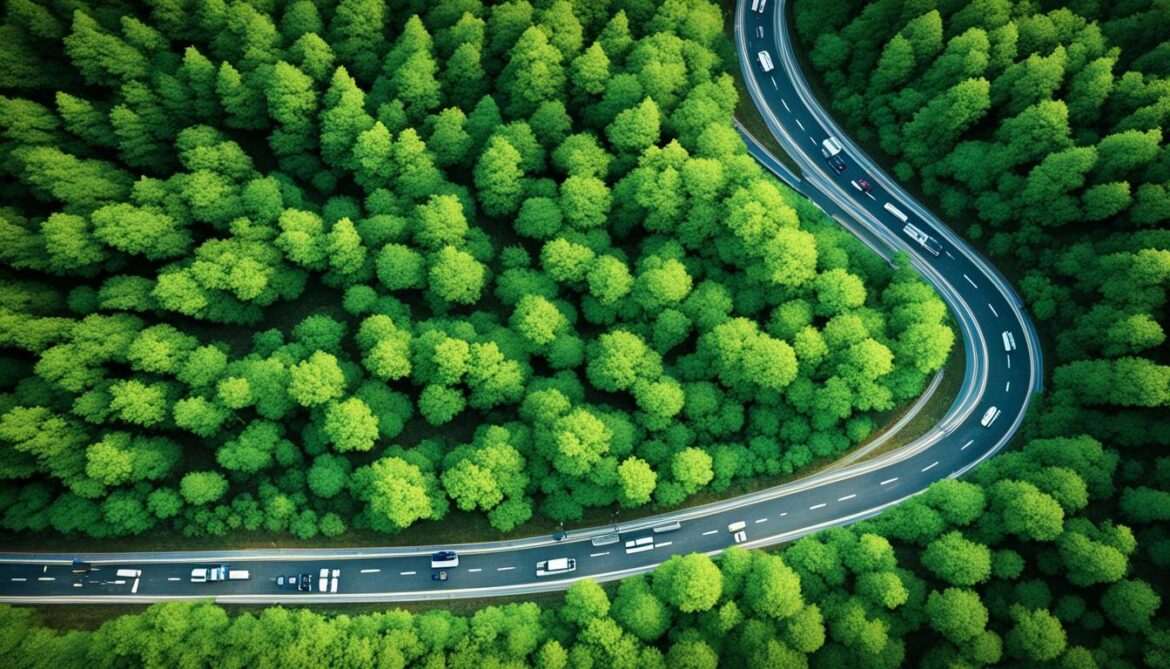
“The expansion of infrastructure networks in South Korea has led to significant habitat loss and fragmentation, placing immense pressure on the country’s biodiversity. It is essential to prioritize the conservation and management of natural habitats alongside infrastructure development to strike a balance between progress and environmental protection.”
To mitigate the negative impacts of infrastructure on biodiversity, various measures can be implemented. For example, the construction of wildlife passages and eco-bridges can reconnect fragmented habitats and facilitate the movement of wildlife across roads. By providing safe crossings for animals, these structures can reduce the risk of wildlife-vehicle collisions and promote habitat connectivity.
Furthermore, incorporating green infrastructure elements into road development projects can help minimize the ecological footprint. This includes measures such as planting native vegetation along roadsides, creating wildlife-friendly landscaping, and implementing stormwater management systems to reduce pollution and preserve water quality.
Public awareness and support are also crucial in mitigating the impact of infrastructure on biodiversity. Educating the public about the importance of protecting natural habitats and wildlife can foster a culture of conservation and encourage responsible development practices.
The Importance of Strategic Planning
Effective strategic planning, including environmental impact assessments and comprehensive biodiversity surveys, is vital before embarking on infrastructure projects. This ensures that potential impacts on biodiversity are properly identified and addressed in the planning and design stages.
By integrating biodiversity conservation into infrastructure development, South Korea can mitigate the negative consequences on wildlife and their habitats. With careful planning, implementation of mitigation measures, and public participation, the country can strike a balance between infrastructure growth and the preservation of its precious biodiversity.
| Impact | Description |
|---|---|
| Habitat Destruction | Road construction leads to the direct destruction of natural habitats, resulting in the loss of critical ecosystems. |
| Habitat Fragmentation | Roads create barriers that fragment habitats, isolating wildlife populations and hindering species movement. |
| Wildlife-Vehicle Collisions | Increased road networks increase the risk of accidents between vehicles and wildlife, endangering both humans and animals. |
| Disruption of Ecosystem Services | The destruction and fragmentation of habitats impact the provision of essential ecosystem services such as clean water, pollination, and natural pest control. |
| Loss of Genetic Diversity | Isolation of fragmented populations reduces genetic exchange, which can lead to reduced adaptability and resilience to environmental changes. |
Conclusion
South Korea is dedicated to the conservation of its biodiversity and striking a balance between development and environmental preservation. The country has undertaken various initiatives, including expanding protected areas, implementing restoration programs, and increasing public awareness, to safeguard its diverse flora and fauna from threats such as habitat loss and climate change.
By prioritizing biodiversity conservation alongside infrastructure development, South Korea aims to achieve sustainable development that nurtures a harmonious relationship between nature and the built environment. Through the preservation of natural habitats and the active involvement of the government and its citizens, South Korea is working towards creating an environmentally sustainable future.
Efforts to conserve South Korea’s biodiversity are not only crucial for preserving the country’s unique ecosystems but also for maintaining the cultural heritage associated with iconic species such as the Crested Ibis. By protecting these species and their habitats, South Korea ensures the continuation of traditional values and beliefs tied to its biodiversity.
South Korea’s commitment to biodiversity conservation, sustainable development, and environmental protection sets a positive example for other nations facing similar challenges. It is through these proactive measures that South Korea strives to safeguard its natural treasures for future generations and promote the coexistence of humans and the natural world.




